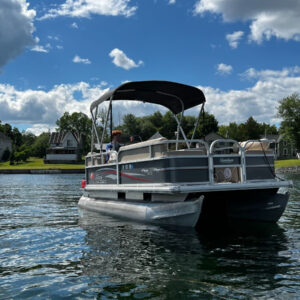Pakistan, strategically located at the crossroads of South Asia, Central Asia, and the Middle East, holds significant geopolitical and economic importance. One of its key assets is its maritime infrastructure, especially its seaports that serve as the backbone of international trade. Ports of Pakistan are not just vital for the country’s trade but also hold the potential to become regional trade hubs connecting landlocked Central Asian states, Afghanistan, and Western China to the Arabian Sea. In this blog, we explore the major ports of Pakistan, their strategic significance, and their role in economic development.
1. Importance of Ports for Pakistan
Ports are crucial for Pakistan’s economy, as about 95% of the country’s trade is conducted via the sea. Efficient and well-developed port infrastructure reduces the cost of imports and exports, enhances supply chain efficiency, and attracts foreign investment. Additionally, with the China-Pakistan Economic Corridor (CPEC) in full swing, the ports are gaining new importance as logistics and transshipment hubs.
2. Major Ports of Pakistan
Pakistan has several operational ports along its coastline, which spans about 1,046 kilometers along the Arabian Sea. The three major ports are:
a. Port of Karachi
The Port of Karachi is the oldest and busiest port in Pakistan. Located on the coast of the Arabian Sea in Sindh province, the port handles approximately 60% of Pakistan’s cargo. It comprises two main wharves: the East Wharf and the West Wharf, and has around 30 berths, accommodating general cargo, containers, oil tankers, and bulk carriers.
Key features:
-
Equipped with modern cargo handling and storage facilities.
-
Operated by the Karachi Port Trust (KPT), a government-run organization.
-
Handles over 50 million tons of cargo annually.
-
Located near major industrial areas, making it ideal for import-export businesses.
Karachi Port is undergoing modernization to remain competitive with regional ports such as those in Dubai and India.
b. Port Qasim
Located approximately 35 km southeast of Karachi, Port Qasim is Pakistan’s second busiest port. It was developed in the 1970s to reduce congestion at Karachi Port and to cater to the growing industrial needs.
Key highlights:
-
Operated by the Port Qasim Authority (PQA) under the Ministry of Maritime Affairs.
-
Handles around 35% of Pakistan’s maritime trade.
-
Hosts several specialized terminals including a Liquid Cargo Terminal, a Coal and Cement Terminal, and a Container Terminal.
-
Strategically located near Pakistan Steel Mills and Bin Qasim Industrial Zone.
Port Qasim is considered a deep-sea port, capable of handling large vessels and has the advantage of lower congestion compared to Karachi Port.
c. Gwadar Port
Gwadar Port, located in the Balochistan province, is a deep-sea port developed with Chinese assistance under CPEC. Although relatively new and still in developmental phases, Gwadar is seen as a game-changer for regional trade.
Strategic and economic importance:
-
Managed by China Overseas Port Holding Company (COPHC).
-
Offers the shortest route to the Arabian Sea for Central Asian countries and western China.
-
Designed to handle bulk cargo, oil tankers, and container ships.
-
Connected via the Makran Coastal Highway and will be linked further through road and rail under CPEC.
Gwadar Port is envisioned as a future logistics and transshipment hub, expected to bring socio-economic development to the underdeveloped Balochistan region.
3. Other Minor Ports
Besides the three major ports, Pakistan also has smaller ports that serve local trade, fishing, and logistics:
Pasni Port
Located in Gwadar District, Pasni is a small commercial and fishing port. It serves local fishermen and supports minor trade activities.
Ormara Port
A strategic naval port, Ormara is home to the Pakistan Navy’s Jinnah Naval Base. It also supports some commercial and fisheries activities.
Jiwani Port
Situated near the Iran border, Jiwani has potential for future development due to its strategic location. Currently, it serves as a naval and small commercial facility.
4. Role in the China-Pakistan Economic Corridor (CPEC)
One of the most transformative developments for Pakistan’s maritime sector is the inclusion of Gwadar Port in CPEC. The corridor aims to connect Gwadar with Xinjiang province in China through road and rail links.
Benefits include:
-
Opening up new trade routes.
-
Reducing China’s dependency on the South China Sea route.
-
Creating employment and infrastructure development in Balochistan.
-
Increasing Pakistan’s significance in regional logistics.
Gwadar Port is central to this vision and is being developed into a smart port city, with an airport, industrial zones, and residential areas.
5. Challenges Facing Pakistani Ports
Despite their potential, the ports of Pakistan face numerous challenges:
-
Outdated infrastructure at Karachi and Port Qasim.
-
Security concerns, especially in Balochistan.
-
Lack of hinterland connectivity, particularly road and rail access to remote areas.
-
Inefficient customs procedures and bureaucratic red tape.
-
Environmental concerns, especially oil spills and marine pollution.
Efforts are being made to modernize port operations, introduce digital customs procedures, and attract foreign investment through public-private partnerships.
6. Future Outlook and Recommendations
Pakistan’s maritime potential is vast, but it remains largely untapped. To harness this potential, the following measures are essential:
-
Modernization of existing ports with new technology and automation.
-
Enhanced security measures, particularly around Gwadar and Balochistan.
-
Increased private sector involvement to boost competitiveness.
-
Improved infrastructure and connectivity with inland industrial zones and neighboring countries.
-
Environmental sustainability initiatives to protect marine ecosystems.
With the right policies and investments, Pakistan’s ports can not only meet the country’s trade needs but also become a regional hub for maritime trade.
Conclusion
Ports of Pakistan are more than just transit points for goods—they are strategic assets that hold the key to economic development and regional connectivity. From the bustling Karachi Port to the emerging Gwadar Port, each port has a unique role in shaping the maritime landscape of Pakistan. With ongoing investments, especially under CPEC, and the right reforms, Pakistan is well-positioned to elevate its ports into engines of national growth and international commerce.







